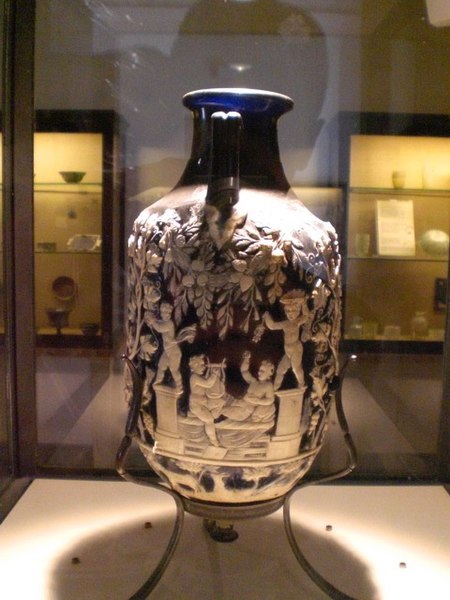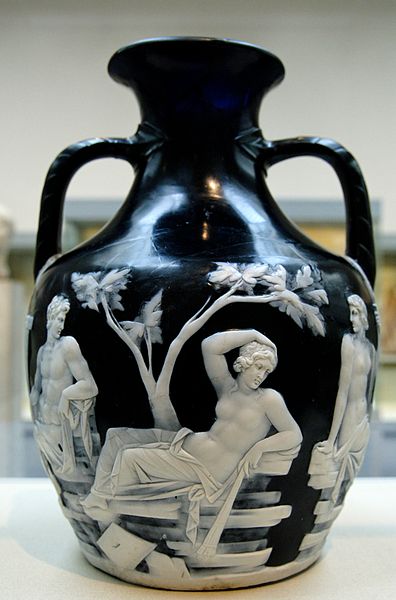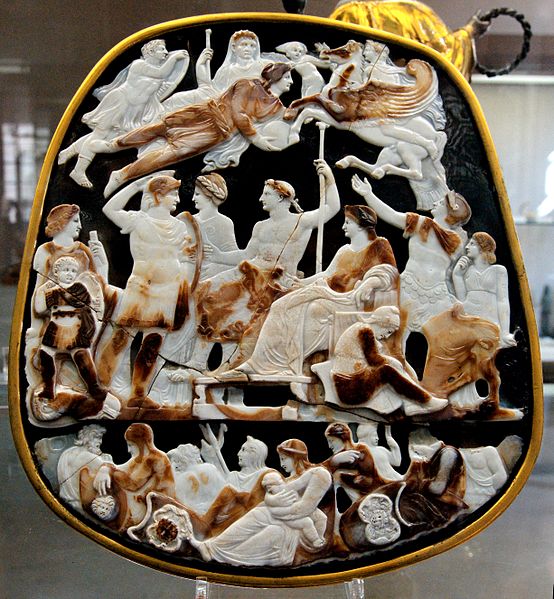Cameo glass is a luxury form of glass art produced by cameo glass engraving or etching and carving through fused layers of differently colored glass to produce designs, usually with white opaque glass figures and motifs on a dark-colored background. The technique is first seen in ancient Roman art of about 30 BC, where it was an alternative to the more luxurious engraved gem vessels in cameo style that used naturally layered semi-precious gemstones such as onyx and agate. Glass allowed consistent and predictable colored layers, even for round objects.
The Portland Vase, about 5–25 AD
First-century Roman vase excavated from Pompeii
The other side of the Portland Vase
Satyr giving grapes to the infant Bacchus, first century
Cameo is a method of carving an object such as an engraved gem, item of jewellery or vessel. It nearly always features a raised (positive) relief image; contrast with intaglio, which has a negative image. Originally, and still in discussing historical work, cameo only referred to works where the relief image was of a contrasting colour to the background; this was achieved by carefully carving a piece of material with a flat plane where two contrasting colours met, removing all the first colour except for the image to leave a contrasting background.
The Great Cameo of France, five layers sardonyx, Rome, c. 23 AD, the largest of Antiquity
Eagle Cameo, Roman 27 B.C. Two-layered onyx.
Cameo of Roman Emperor Augustus wearing a gorgoneion and a sword-belt. Three-layered sardonyx cameo, Roman artwork, c. 14–20 AD.
Woman wearing a cameo at her throat, on a high lace collar in the Edwardian style








